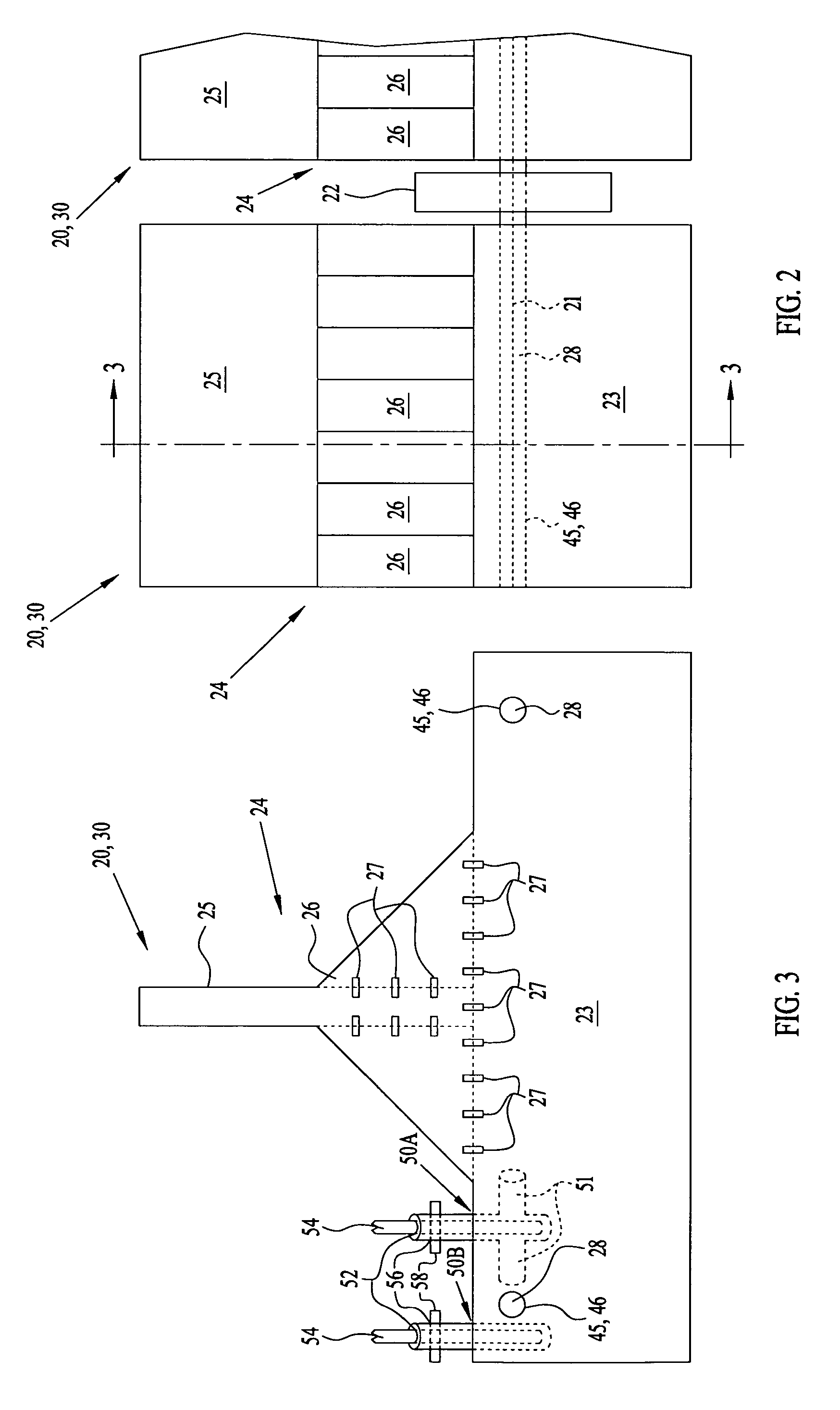Floating low density concrete barrier
a concrete barrier and low density technology, applied in special-purpose vessels, water cleaning, vessel construction, etc., can solve the problems of high cost, time-consuming fabrication process, and high cost of construction, and achieve the effect of low cos
- Summary
- Abstract
- Description
- Claims
- Application Information
AI Technical Summary
Benefits of technology
Problems solved by technology
Method used
Image
Examples
Embodiment Construction
[0025]Referring to FIGS. 1, 2, and 3, a barrier 10 for small boats floats on water 6 and extends across a waterway surface 7 or along a perimeter 8 bordering marine facilities such as supply or fueling docks, warehouses, anchored ships, etc. that are to be closed to traffic from small boats. Barrier 10 has a sufficient number of cast flotation modules 20 on lines 21 extending through adjacent flotation modules 20 to reach across waterway surface 7 or along the length of perimeter 8 to anchoring systems 12. Anchoring systems 12 include an anchor 13 and lines 14 that are connected to lines 21 not only at opposite ends of barrier 10, but may be coupled to lines 21 along the length of barrier 10. Lines 21 and 14 can include stretchable nylon or other non-corrosive energy absorbing material or wire rope or chain to help absorb the energy of impacting craft. At least one resilient cushion structure 22 is interposed between adjacent flotation modules 20 to prevent them from knocking agains...
PUM
 Login to View More
Login to View More Abstract
Description
Claims
Application Information
 Login to View More
Login to View More - R&D
- Intellectual Property
- Life Sciences
- Materials
- Tech Scout
- Unparalleled Data Quality
- Higher Quality Content
- 60% Fewer Hallucinations
Browse by: Latest US Patents, China's latest patents, Technical Efficacy Thesaurus, Application Domain, Technology Topic, Popular Technical Reports.
© 2025 PatSnap. All rights reserved.Legal|Privacy policy|Modern Slavery Act Transparency Statement|Sitemap|About US| Contact US: help@patsnap.com



